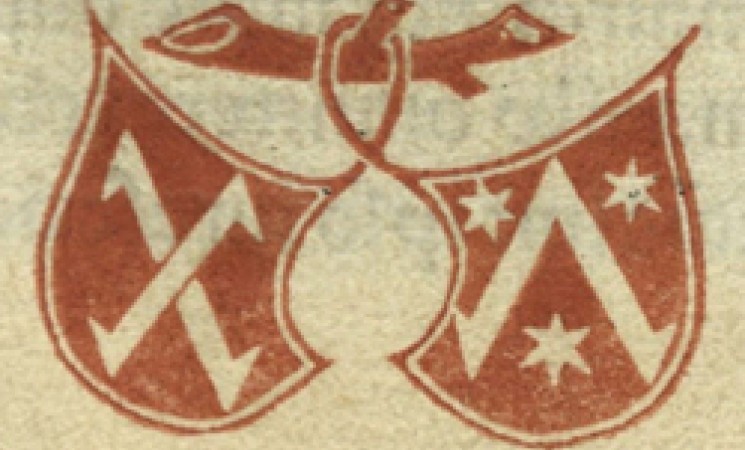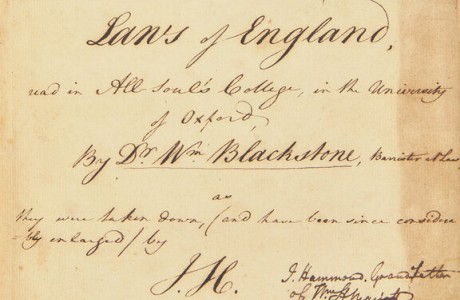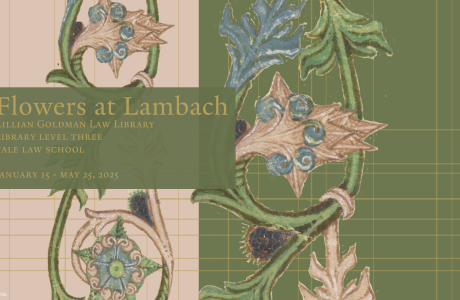Printers' devices from law books

My interest in law book illustrations has led me to study and collect other graphic elements in early printed law books. Some of the most lovely and charming of these are printers’ devices, also known as printers’ marks. A printer’s device is a trademark of sorts, serving both as a marketing tool and a copyright notice of sorts, warning potential interlopers of the printer’s property interest in the work.
I have assembled over 330 examples of printers’ devices from our Rare Book Collection in the Printers’ devices album on our Flickr site. The images are titled and sorted by place of publication - printer/publisher, year. The captions give the complete bibliographic citation for the source of the image. Most online collections of printers’ devices give the device alone, usually in black and white. I present the images in full color at the highest resolution available, making it possible to distinguish between woodcuts and engravings. I include the imprint when it is adjacent to the device, to provide additional context. The examples that follow include links to their Flickr images and to their records in our online catalog, MORRIS.
The very first printer’s device, shown above, was that of Johann Fust and Peter Schoeffer, who took over Johann Gutenberg’s press. Fust was Gutenberg’s financial backer and Schoeffer was his apprentice. The device first appeared in their 1457 Mainz Psalter. Our example comes from Schoeffer’s 1476 edition of the Constitutiones of Pope Clement V (also known as the Clementines), one of the foundational texts of canon law.
The earliest printers’ devices were a variety of craftperson’s marks. Some were similar to those used by silversmiths, often in the form of monograms (here is one example), while others replicated the signs hanging at the doors of printers’ shops, which served as addresses in the time before numbered street addresses. Both these elements are incorporated in the device of Richard Tottel, the London printer who held the monopoly on English common law books in the latter 16th century, located “in Fletestrete within Temple Barre, at the signe of the hand & starre.”

Curiously, of the hundreds of law books that Tottel published between 1552 and 1593, his 1556 edition of Year Book cases from Michaelmas term, 4 Henry VI, is the only appearance of his printer’s device I can find.
My interest in printers’ devices grew out of efforts to collect images of Justitia in law books. I’ve amassed close to a thousand examples in the Flickr site, in illustrations as well as in decorative elements such as headpieces, tailpieces, initials, and title page vignettes (including printers’ devices). Somne printers might have used the figure of Justitia to market their books to the legal profession, but her use was never limited to law books or legal audiences. One example is the device of Wolfgang Endters, part of a family of Frankfurt printers active in the 17th century. The device appears on the title page of Marcantonio Pellegrini’s De fideicommissis (1645). As described in the excellent Pitts Theology Library Digital Image Archive:
This printer’s device … illustrates a life lived with perserverance by the figures representing Truth and Justice placing a crown on a skull. The Latin inscription above the device “Persevera usque ad finem et coronaberis” translates “Persevere until the end and you shall be given a crown” (cf. Revelation 2:10). A Latin motto beneath the device “Assuesce et persiste” also states “Become accustomed and persist”.

In the 16th century printers’ devices migrated from the colophons at the end of the text to the title pages, and became progressively more ornate. While the majority are woodcuts, engraved devices became increasingly common in the 17th and 18th centuries. Engravings provided much finer image detail, but were also more expensive. They required separate presses for the letterpress and the engraving, and skill by the printer to place the engraving in the correct location on the page.
There is a wonderful variety to printer’s devices. In artistic quality they range from the humble to the elegant. There are rebuses, cityscapes, religious images, allegorical images, and images from classical mythology. They are populated by printers, readers, writers, sculptors, farmers, shepherds, and sailors. The animals that appear range from the wild to the domestic to the imaginary: lions, eagles, dolphins, snakes, cows, roosters, hens, geese, dogs, cats, salamanders, griffins, and unicorns. And trees, lots of trees. Their subject matter can be whimsical, motivational, or patriotic. Images that were once legible to their viewers are now obscure. Some are miniature masterpieces.
Printers’ devices were first and foremost marketing tools. However, in looking at them as a group it is impossible to ignore their aspirational aspect. Printers had commercial ambitions, but they also sought to portray themselves as actors in the world of learning and culture.
I will conclude with just two of my personal favorites. The device of Giacomo Antonio Bagnoli appears in the third volume of Scipione Rovito’s Consiliorum seu iuris responsorum (Naples, 1669). The goggle-eyed cormorant is utterly charming, and the device as a whole, with its vigorous lines, is the perfect example of why I love woodcuts as an art form.

I’m a big fan of sailing ships. I immediately fell in love with the engraved device of Horace Boissat and Georges Remeurs that appears in their 1661 Lyon edition of the collected works of the Spanish jurist Antonio Gómez.

To research our printers’ devices I made extensive use of the CERL Thesaurus (Consortium of European Research Libraries) and the Pitts Theology Library Digital Image Archive (Emory University). I recommend both of them highly.
In closing, I realize that cropping printers’ devices from the title pages and colophons where they appear takes them out of their original context, but it also allows them to shine as gems of the graphic arts.
– MIKE WIDENER, Rare Book Librarian
P.S. If you’re interested in the decorations of early printed books, you might enjoy these other image albums on our Flickr site:


